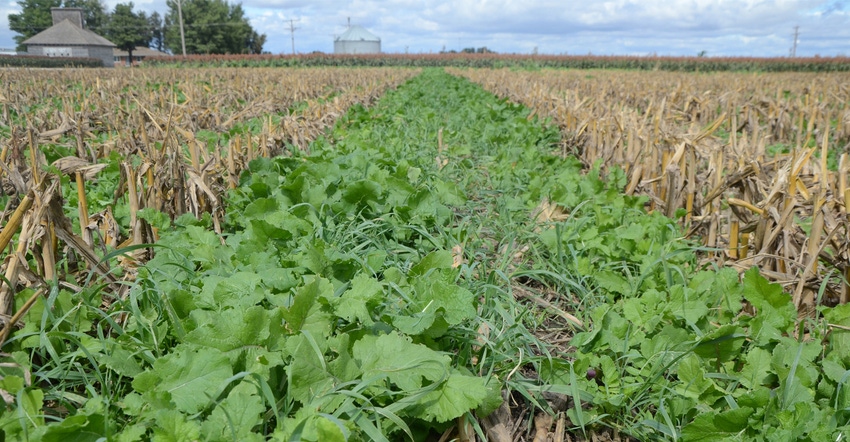
USDA's National Agricultural Statistics Service releases its Census of Agriculture every five years, compiling data from across the country into hundreds of tables, maps and charts for various commodities, states, kinds of farming and ranching operations, and producer demographics.
The 2017 Census of Ag was released earlier this spring, and while sifting through the data is time-consuming, it sheds light on the state of agriculture in different parts of the U.S.
We've broken down a few key takeaways for Nebraska from the 2017 Census of Agriculture:
1. Number of farms. The total number of farms in Nebraska declined from 49,969 in 2012 to 46,332 in 2017.
2. Farm size. While the average farm size rose from 907 to 971 acres, the total amount of land used in agriculture gradually declined from 45,331,783 to 44,986,821 acres from 2012 to 2017.
"The average size of farms has increased slightly while the median size has essentially stayed the same," says Jim Jansen, Nebraska Extension agricultural economist. "There are new development areas, roadways, other things that acreages could have been lost to. That's a phenomenon that's true across the United States."
3. Cropland acres. Meanwhile, total cropland acres rose from 21,597,393 to 22,242,599 from 2012 to 2017. On the other hand, total pasture and rangeland acres declined by a similar amount — from 22,297,424 in 2012 to 21,531,851 in 2017.
"We've added 645,206 acres in crop production," Jansen says. "Leading up to 2012, we had high crop prices. There's a little bit of a lagged effect in crop prices where it takes people a while to respond. When they did respond, they responded by adding over half a million acres. There are two places where farmland may have come from, including either grazing or hay land along with expiring Conservation Reserve Program acres that may have not been bid back into the program."
4. Irrigated farms. Irrigated land also rose from 8,296,573 acres in 2012 to 8,588,389 in 2017 — an increase of about 291,000. Meanwhile, the total number of irrigated farms declined from 17,136 to 16,112.
5. Livestock inventory. Total cattle and calves inventory rose from 6,385,675 in 2012 to 6,759,945 in 2017 — an increase of about 374,000 since the 2012 drought. The number of broilers and other meat-type chickens sold rose from 4,777,716 in 2012 to 6,785,473 in 2017.
The number of beef cows increased as well — going from 1,730,112 in 2012 to 1,896,454 in 2018. With the decline in permanent pasture acres, this suggests ranchers may have changed their management practices with regard to raising cow-calf pairs or stockers.
"That includes better management practices — using things like cover crops, if cover crops can stretch the grazing season or allow the producer to maintain a number of cattle on their operation that they may not be able to do unless they use alternative forages," Jansen says. "Increased utilization of crop residue postharvest is another factor. And, use of byproducts in livestock rations has grown, especially in feedlots."
6. No-till and cover crops. Acres under no-till rose from 9,360,482 in 2012 to 10,256,995 in 2017 — an increase of nearly one million acres. Cropland under reduced tillage increased by a similar amount —from 4,930,116 to 5,950,801 acres.
Acres under intensive tillage declined from 3,396,233 in 2012 to 2,059,060 in 2017. Perhaps most notable, acres in cover crops more than doubled from 2012 to 2017 — going from 357,264 to 747,903. Farms planting cover crops rose from 2,826 to 4,419.
"There might be a variety of factors that led to greater adoption of cover crops across Nebraska,” Jansen says. “One might be better nutrient management, especially areas where we might have issues with groundwater nitrate, and another might be conservation practices related to erosion control.
"Another factor, with fairly high pasture rental rates, people might be looking for different forages for livestock. The last factor might be conservation incentive programs — including the USDA Natural Resources Conservation Service's EQIP [Environmental Quality Incentives Program]."
About the Author(s)
You May Also Like






